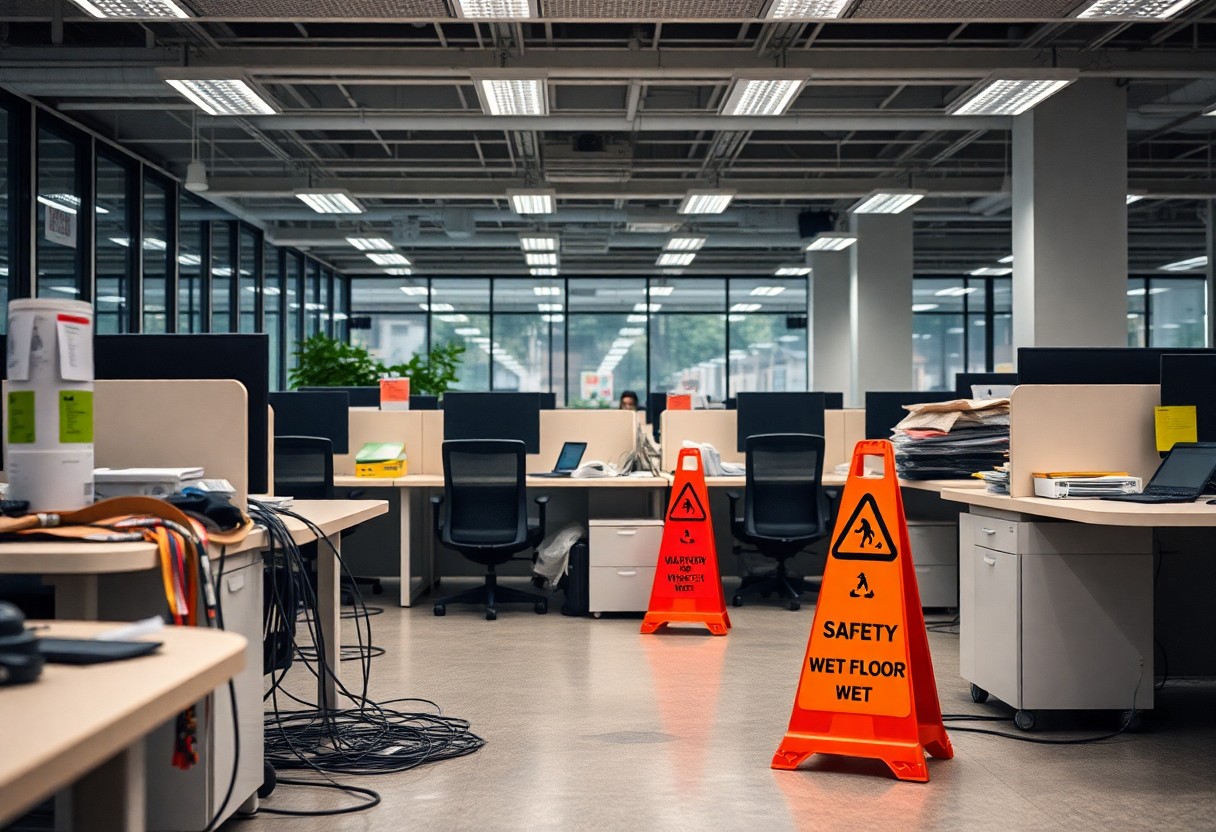Just because you are in an office environment does not mean you are exempt from safety risks. Everyday hazards can lurk around every corner, often going unnoticed until an incident occurs. Understanding and managing these risks is important for your well-being and the safety of those around you. In this article, we will highlight common hazards you may encounter in the office and provide you with practical tips to help create a safer workspace.
One of the most common hazards you might face in an office setting is slips, trips, and falls. These incidents can result from wet floors, loose carpet tiles, or cluttered walkways. To mitigate these risks, always keep your workspace clean and organized. Ensure that cables and wires are secured, and if you notice a spill, report it immediately so it can be cleaned up. By maintaining a tidy environment, you significantly reduce the likelihood of accidents.
Another everyday hazard that can often be overlooked is ergonomics. Poor posture can lead to various musculoskeletal issues, affecting your productivity and overall comfort. It is important to adjust your workstation to suit your individual needs. Invest in a comfortable chair that provides good lumbar support and ensure your computer monitor is at eye level. Regularly stretch your muscles and change positions throughout the day to avoid stiffness and discomfort.
Fire safety is another critical aspect of office safety that cannot be ignored. Make sure you are familiar with your office’s evacuation routes and procedures. Participate in regular fire drills and ensure that emergency exits are accessible and well marked. Keep flammable materials safely stored and be mindful of the equipment you use, such as computers and printers, which can overheat if not monitored properly.
Your office environment can also harbor hidden dangers, such as poor indoor air quality. Offices often have inadequate ventilation, which can lead to headaches, fatigue, and decreased concentration. It’s important to ensure that the workplace is well-ventilated and to report any issues related to air quality. Regularly clean air conditioning filters, and if you use any chemicals or cleaning products, ensure they are stored properly to prevent exposure to harmful substances.
Another significant hazard to consider is stress. High workloads and tight deadlines can create a stressful atmosphere, impacting both your physical and mental health. It is important to manage your time effectively and take breaks when needed. Establishing a good work-life balance, engaging in physical activity, and communicating with your supervisor if you feel overwhelmed can greatly improve your workplace experience.
Lastly, be vigilant about personal safety, especially in shared office spaces. Be aware of your surroundings, and don’t hesitate to report any suspicious activity. Secure your personal belongings and ensure that confidential documents are stored safely. Your safety is not just about preventing accidents; it also involves protecting yourself and your information.
After all is said and done, do not take office safety lightly. By being proactive and identifying potential hazards in your work environment, you contribute to not only your safety but also the safety of your colleagues. Make it a habit to assess your surroundings regularly, adopt safe practices, and foster a culture of safety within your office. Together, we can create a safer workplace for all.

Leave a Reply